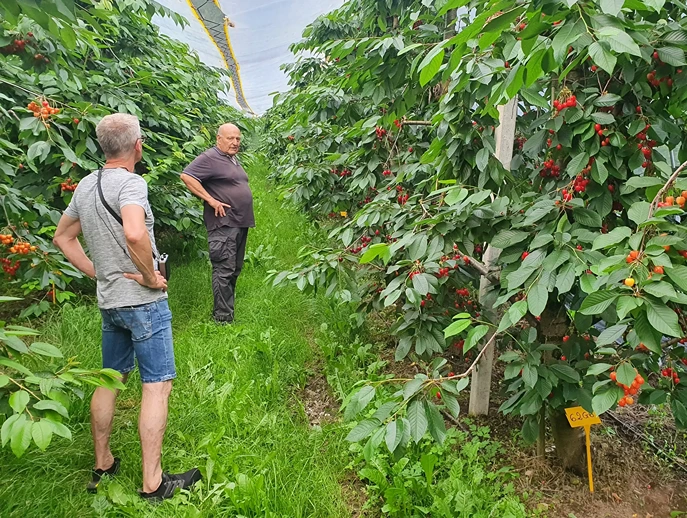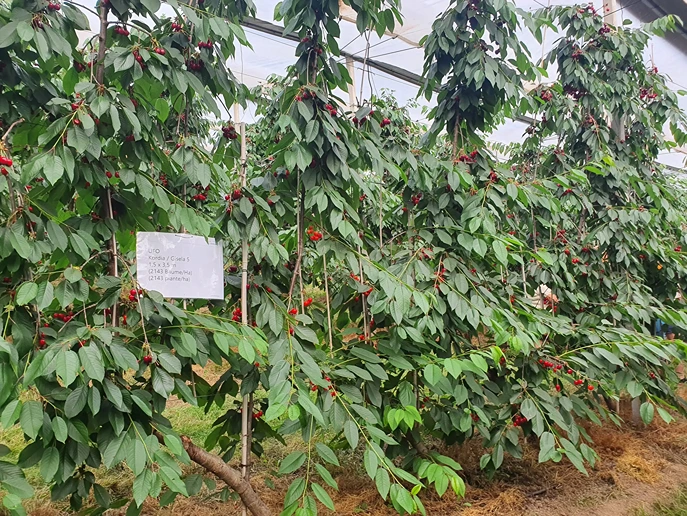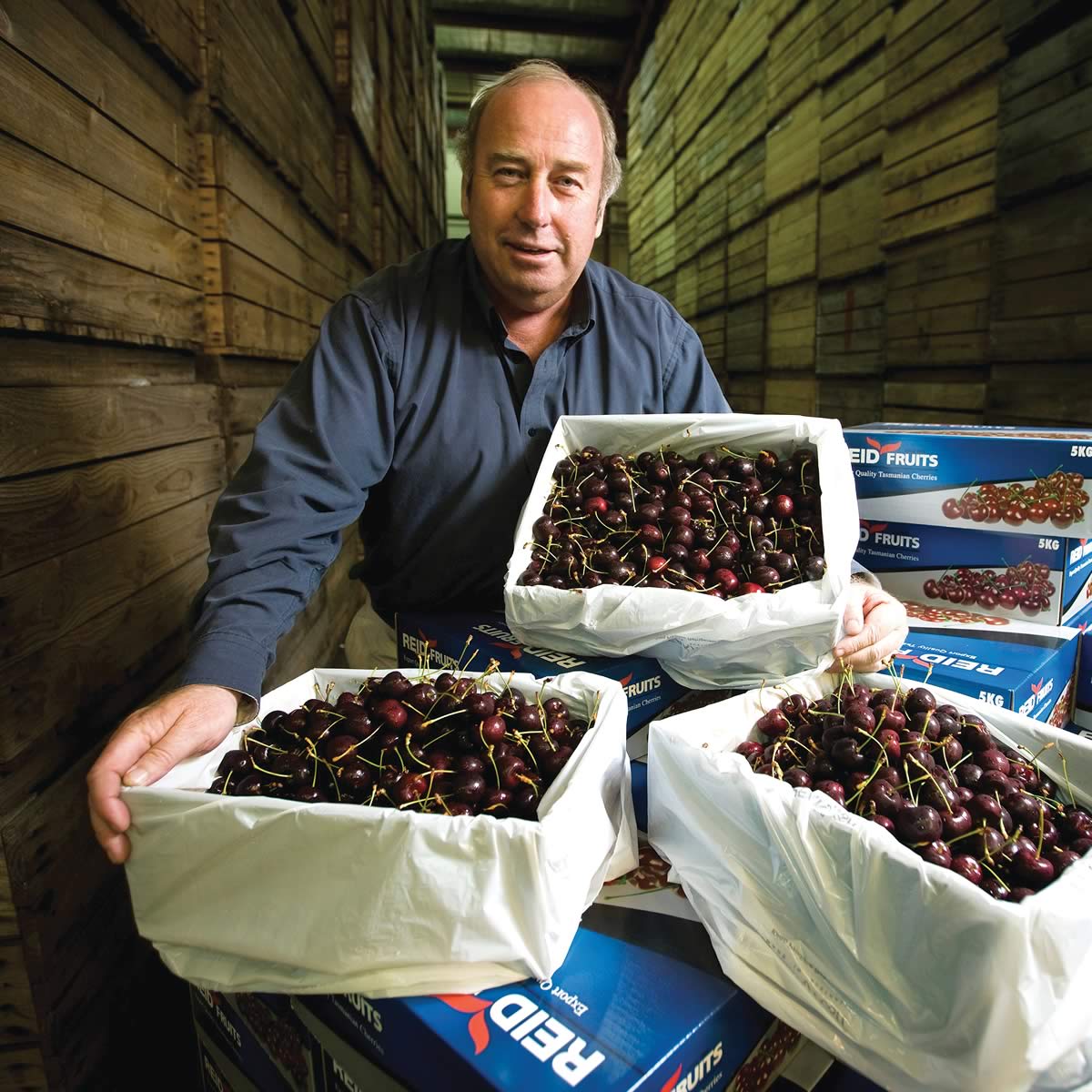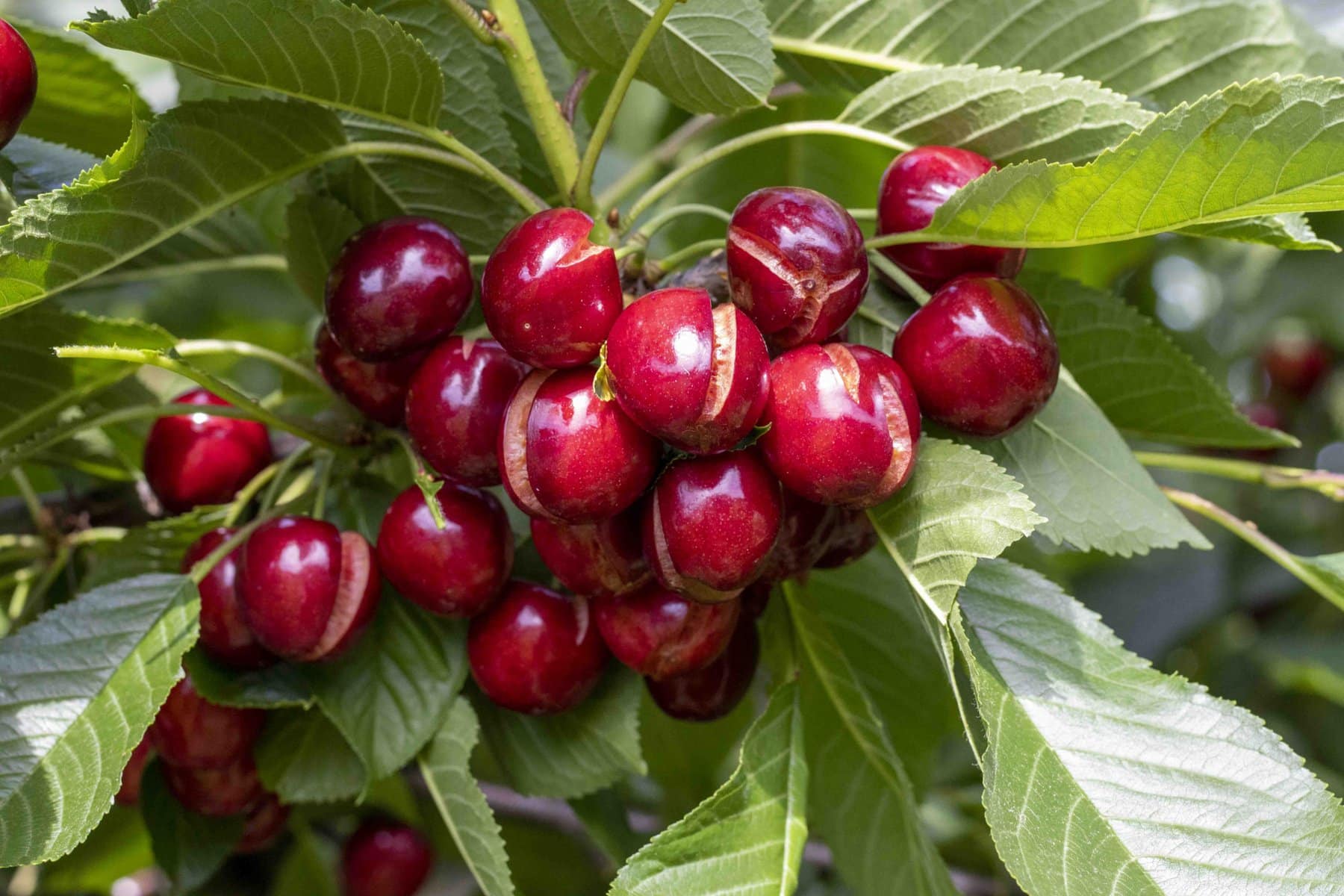Some selections of dwarfing rootstocks for cherry Gisela® have recently been authorized for the orchard sector in New Zealand and will be more widely available to growers starting in 2026. Waimea Nurseries in Nelson has confirmed that Gisela® 6 and Gisela® 12 rootstocks are in production, while Gisela® 5, 13, and 17 are currently in importation and quarantine.
Gisela® 12 and 6 are currently being grown indoors in tissue culture at the Waimea Nurseries lab and are under trial in orchards in Central Otago, including Clyde Orchards and Suncrest Orchard in Cromwell. Dwarfing rootstock trials for cherries are also underway in Hawke's Bay.
Varietal development manager Tallulah Simpson states that more of these rootstocks will be available in commercial quantities by the end of 2026.
When Professor Dugald Close from the University of Tasmania visited New Zealand in July, he said that Australasia still has a long way to go before achieving the benefits available in America and Europe, such as widespread availability of dwarfing rootstocks.
Dwarfing rootstocks for cherries offer significant opportunities to create more intensive cultivation systems, but Waimea Nurseries notes that they have so far been difficult to propagate in nurseries. “It’s not easy, and we are cautious,” says Kate Marshall, general manager of sales and marketing.
The advantage of growing rootstocks from tissue culture is that they are virus-free.
Growing on dwarfing rootstocks, compared to traditional Colt rootstock, allows growers to produce very high volumes quickly, explains Kate. In the past, growers were reluctant to use them due to their cost, and the investment paid off only if the land had sufficient nutrients and growers could successfully implement the changes in their orchard systems.
Tallulah states that New Zealand has lagged behind the United States, Europe, and Chile in terms of the availability of these rootstocks due to difficulties in importing plant material and because they require significant investment.
The Gisela® rootstock has already been well-commercialized abroad, and Central Otago is ideal for using dwarfing rootstocks due to its unique climate, soil conditions, and diverse soil types across the district, explains Kate. However, dwarfing rootstocks demand maximum commitment from growers to make them profitable, and many growers realize this.
 Image 1: Regina on Gisela 6.
Image 1: Regina on Gisela 6.
Clyde Orchards planted their first row of dwarfing rootstocks for Gisela® cherries in 2018 as a trial, and their production looks promising. According to director Kris Robb, the challenge was achieving sufficient fruit production for the business, which requires more trees (such as an entire block) to work with.
For growers to efficiently manage their orchard systems, large quantities of new rootstocks are needed.
According to Kris, the lack of dwarfing rootstocks for cherries has hurt the sector's overall productivity. “Probably, the inability to source dwarfing rootstocks has disadvantaged some underperforming varieties.”
Kordia, Regina, and Folfar are the three cherry varieties that come to mind, but he acknowledged that challenges lie with both growers and nurseries. “It took a long time to learn and for nurseries to fine-tune their systems.”
More orchards will look to start using dwarfing rootstocks as soon as they are available. “If you can harvest more fruit, your picking costs are reduced. You end up with smaller, more compact trees that are easier to prune and pick,” explains Kris.
Growers will see their profits more quickly, and their yield per hectare will also be higher. With Colt rootstocks still representing 99% of the sector, new dwarfing rootstocks will give growers the chance to fruit in two years instead of the standard five.
Michael Jones, a grower in Cromwell and Suncrest Orchard, planted 10,000 trees over two different periods, but he says it is still early to tell how they will perform. He received some specimens of Gisela® 5 and 12 in 2020 and planted more in 2022.
“We were allowed to graft and bud different varieties onto these stocks and grow trees for our trellis system at a density of 4,000 trees per hectare.” “Success rates varied between 40 and 70% depending on the rootstock and variety. Usually, failure was due to rootstock growth and graft or bud failure, which allowed for regrafting of the rootstock.”
 Image 2: Kordia on Gisela 6 trained to UFO.
Image 2: Kordia on Gisela 6 trained to UFO.
Grafting and budding were done on-site by contractors, and the experience has been positive so far.
“We appreciated the contribution of several people who gave us advice on what we could do or try in this situation, and it was great to pass ideas by people like Andy McGrath or Ronald Vermeulen and get their perspective on what we were doing.”
Michael says that, given the possibilities offered by current cultivation systems, it will be interesting to see how the sector progresses over the next decade.
“We explored the use of dwarf plants because we were frustrated by the inconsistent yield and the time it took for less intensive plantings to reach full production; also for the potential to maximize quality and size while reducing labor and other cultivation inputs.”
Of course, the capital expense is a significant cost, but his advice to growers is to try different solutions in their plots, “whether it’s two trees, two rows, or two hectares. If you don’t try, you can’t know. I’m really eager to see and work with our new blocks when they start their productive phase.”
With dwarfing rootstocks, growers can also plant more trees per hectare, improving the efficiency of land use. Over time, existing orchards can be converted into higher-density orchards, meaning less land use while maintaining the same volumes on a smaller area.
Richard Mills, technical consultant for Summerfruit NZ, says that dwarfing plants will also be a significant advantage for other cherry-growing areas, especially in the strong soils of Hawke's Bay. “The anticipation of the harvest period could also benefit consumers by providing a longer harvesting season.”
He notes that good dwarfing rootstocks for apples, which emerged about 20–25 years ago, were a major factor in allowing this product group to make huge strides toward greater yield on a smaller area. Waimea Nurseries is currently propagating the new selections of dwarfing cherry rootstocks in an “Ellepot,” which features a paper membrane, grown indoors in a “Cravo” greenhouse (a greenhouse with an automatically retractable roof).
The seedlings are taken to the nursery in Nelson to be cultivated, grafted, and then grown further until they are ready to be supplied to growers. “We hope to have more success with these seedlings in a temperature-controlled environment because it is gentler on the plants compared to a traditional field,” says Kate.
Growers have achieved extraordinary results with the vigor of Colt rootstock in New Zealand orchards, using FOPS (Future Orchard Planting Systems), UFO (Upright Fruiting Offshoots), and trellis growing techniques to improve productivity due to the lack of dwarfing rootstocks.
Tallulah notes that New Zealand cherries are a premium export, and soon, with greater availability of dwarfing rootstocks, they will become more competitive in this sector. “Central Otago is an incredible growing area that produces fruit of the highest quality, and we, as a nursery, want to give growers every opportunity to make the most of it.”
Source: Horticulture NZ
Images: SL Fruit Service
Cherry Times - All rights reserved












